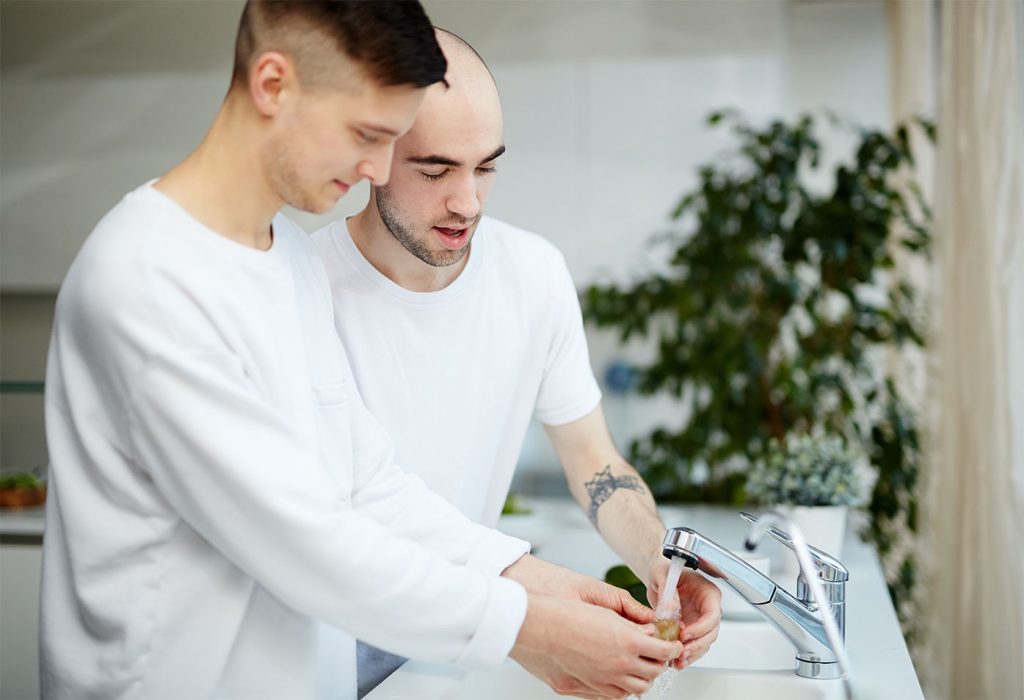
What is Reinforcement?
Reinforcement is what happens immediately after a behaviour occurs, which strengthens it. When a behaviour is reinforced, it happens more often. Provide positive reinforcement whenever you notice that the individual is engaging in desired behaviours. If you praise an individual just as they finish hanging up their coat in the closet, the next time they take off their coat they will be motivated to hang up the coat again. In this case praise was the reinforcer.
Everyone has different motivators, therefore what may be reinforcing for one person may not be appealing to another.
Reinforcement Delivery
There are several components to consider when providing reinforcement:
1. Distinctiveness
- The individual should be able to distinguish between your instructions, other things in the environment, and reinforcement. This is important to remember when providing verbal praise.
- To make verbal praise more distinctive, vary the tone of your voice, be specific.
2. Immediacy
- Reinforcement should be provided 3-5 seconds after the target behaviour occurs.
- Waiting too long (e.g., seconds or minutes) might mean your attempt at reinforcing the target behaviour has no effect and you may have inadvertently reinforced another behaviour.
3. Reinforcer Variation
- Use a variety of reinforcers, not just one. This helps slow down satiation. Satiation is when a reinforcer stops working because it is used too often.
- When trying to reinforce a behaviour, alternate between preferred items or provide choices to the individual.
What To Do
Every time Scott sneezes into his elbow, we smile at him and say, “Great covering your sneeze”. Over the next two weeks he goes from rarely sneezing into his elbow to sneezing into his elbow every time. Smiling at and praising Scott has reinforced the target behaviour.

What Not To Do
The goal is for Maria to wash her hands after every meal. You know that praise is particularly reinforcing for Maria. You notice that she washes her hands after eating, but you don’t say anything right away because you are busy. A few minutes later when she’s leaving the kitchen, you tell her, “Thanks for washing your hands, Maria”.

Token Economy
A token economy is a form of behaviour modification designed to increase desirable behaviour and decrease undesirable behaviour with the use of tokens. Individuals receive tokens immediately after displaying desirable behaviour. The tokens are collected and later exchanged for a meaningful object or privilege.
A token board is often used to track the progress of the individual and indicate how many tokens must be earned to exchange for the reinforcer.
Why Are They Effective?
Token economies are a more efficient way of delivering reinforcement. Tokens can be delivered with greater ease than giving an edible or preferred item after each occurrence of the target behaviour. Token economies can also be used with an individual or a group setting, such as a classroom. Delaying the item or activity that the individual wants (backup reinforcer), but contingently delivering the token (learned reinforcer) can teach waiting and maintain motivation during teaching. A token economy can also help prevent an individual from becoming satiated with a reinforcer. Delivery of the reinforcer, like with all other reinforcement methods, must be done frequently and immediately after the target behaviour occurs. The token can be paired with praise or another backup reinforcer.
What Type of Token/Token Board Should Be Used?
Selection of the type of tokens and token board to be used is critical to the implementation of the system. The token itself should have some reinforcing value to the individual. For example, if the individual is interested in Ninja Turtles, each token could be a character from the show and the token board could be in the form of a slice of pizza. It is beneficial to have tokens that are easy to deliver, are durable and can be easily carried from one activity to another.
For more information and workshops on reinforcement check out this page.
